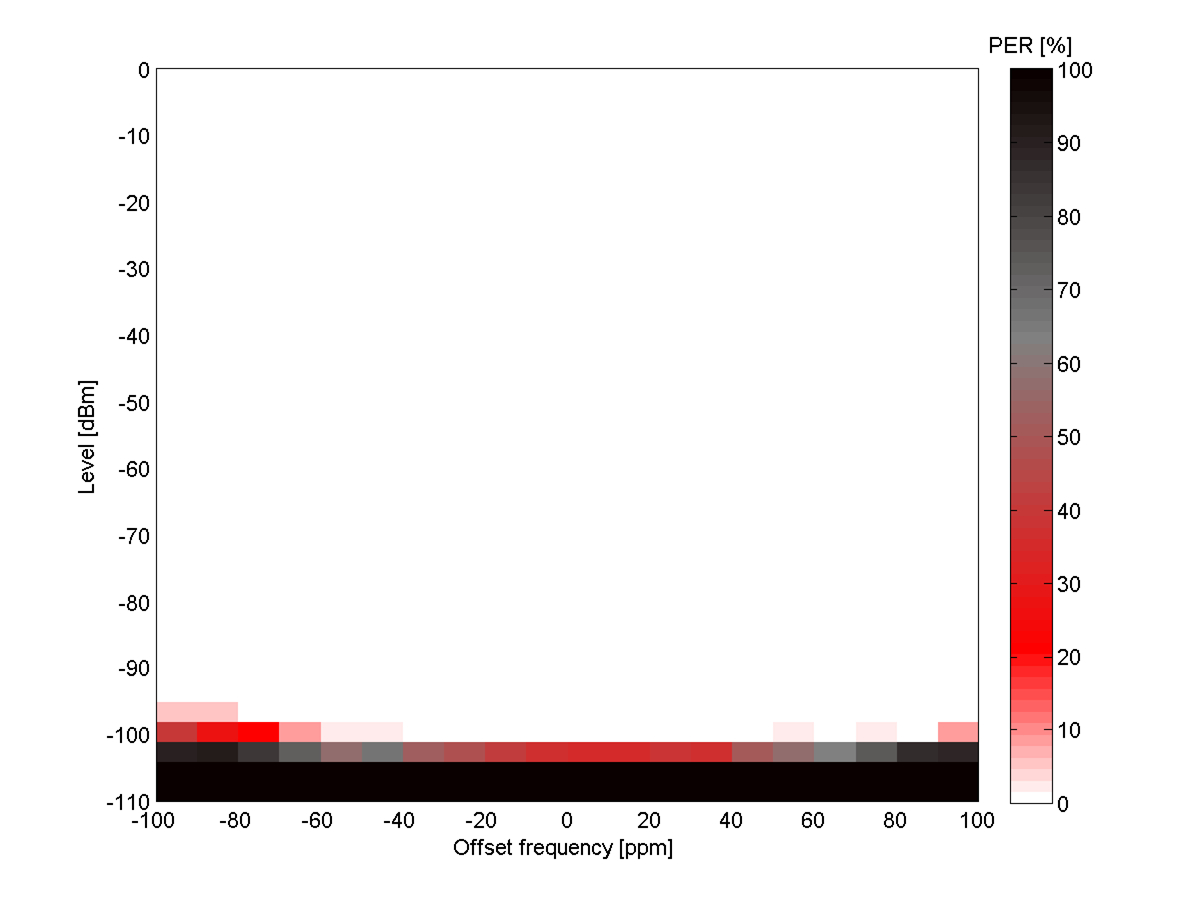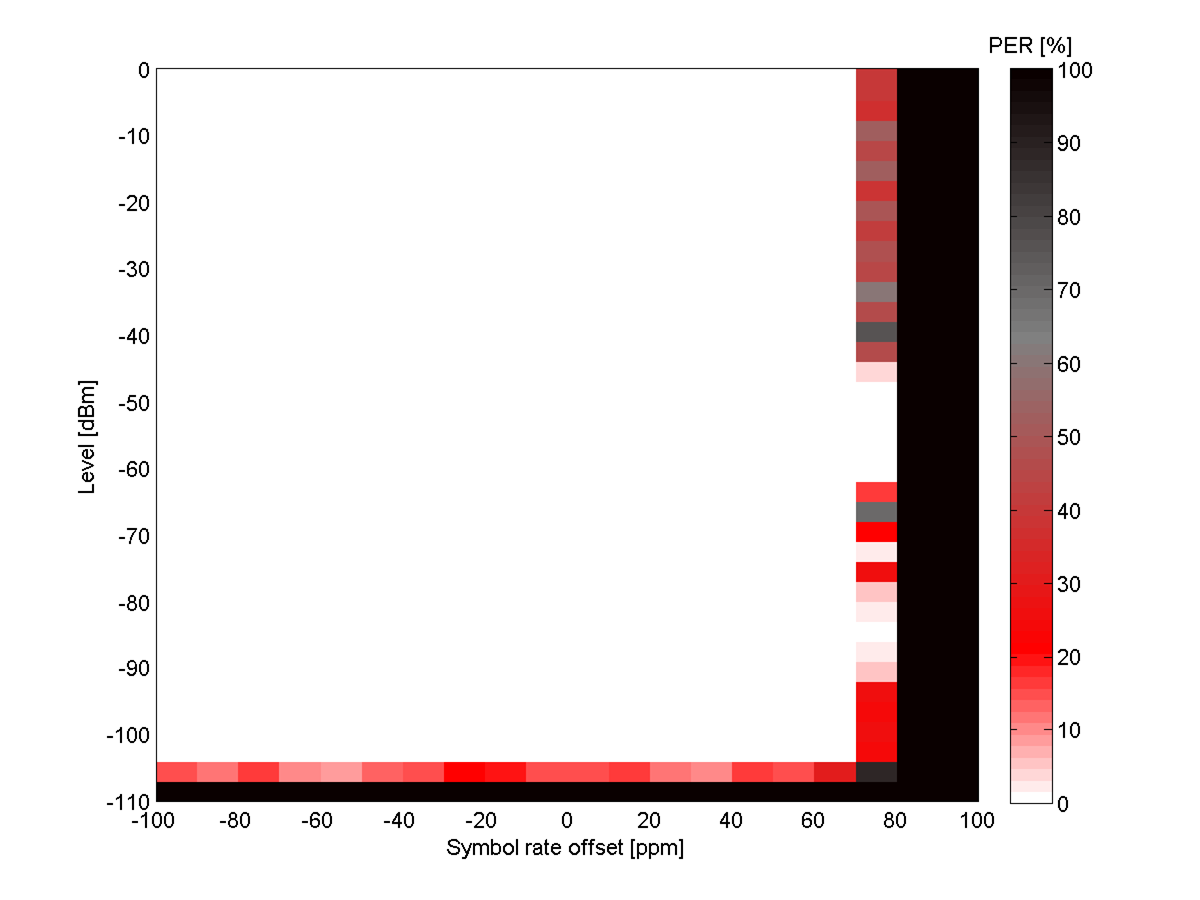SWRA696A April 2021 – November 2021 CC1352P , CC1352P7 , CC1352R
6.1.5 WB-DSSS Frequency Offset Tolerance
Figure 6-17 and Figure 6-18 show the frequency offset performance of the WB-DSSS scheme. In contrast to narrowband low data rate systems, the crystal accuracy is not critical in this case as the RX bandwidth is relatively large.
From the results, it can be seen that sensitivity remains unchanged for considerable amount of crystal drift (±70 ppm).
 Figure 6-17 Frequency Offset
Performance (915 MHz, K = 4, DSSS = 1, 240 kbps)
Figure 6-17 Frequency Offset
Performance (915 MHz, K = 4, DSSS = 1, 240 kbps) Figure 6-18 Frequency Offset
Performance (915 MHz, K = 4, DSSS = 8, 30kbps)
Figure 6-18 Frequency Offset
Performance (915 MHz, K = 4, DSSS = 8, 30kbps)